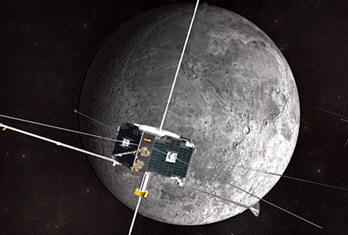|
|||||||||||
|
|
|
|||
|
By |
||||
 |
November 1, 2010 - Two NASA spacecraft have been assigned a new mission after successfully completing their original science objectives earlier this year. The duo began making observations this week to study how solar wind electrifies, alters and erodes the moon's surface. Data could reveal valuable information for future explorers and give planetary scientists a hint of what's happening on other worlds around the solar system. The new mission is called ARTEMIS, or Acceleration, Reconnection, Turbulence and Electrodynamics of Moon's Interaction with the Sun. ARTEMIS uses two of five in-orbit spacecraft from NASA's THEMIS, or Time History of Events and Macroscale Interactions during Substorms, mission. |
|||
|
|
||||
|
"Using two
repurposed satellites for the ARTEMIS mission highlights NASA's
efficient use of the nation's space assets," said Dick Fisher, director
of the Heliophysics Division in NASA's Science Mission Directorate at
the agency's headquarters in
"ARTEMIS will
provide a unique two-point view of the moon's under-explored space
environment," said Vassilis Angelopoulos of the One ARTEMIS spacecraft reached what is called the L2 Lagrange point on the far side of the moon on Aug. 25. On Oct. 22, the other spacecraft entered the L1 Lagrange point on the Earth-side of the moon. Lagrange points are places where the gravity of Earth and moon balance, creating a sort of gravitational parking spot for spacecraft. NASA repositioned the two outermost THEMIS spacecraft using spare on-board fuel and a set of complex orbit maneuvers over the course of more than a year.
"ARTEMIS is going
where no spacecraft have gone before," said Manfred Bester, Mission
Operations manager from the |
||||


